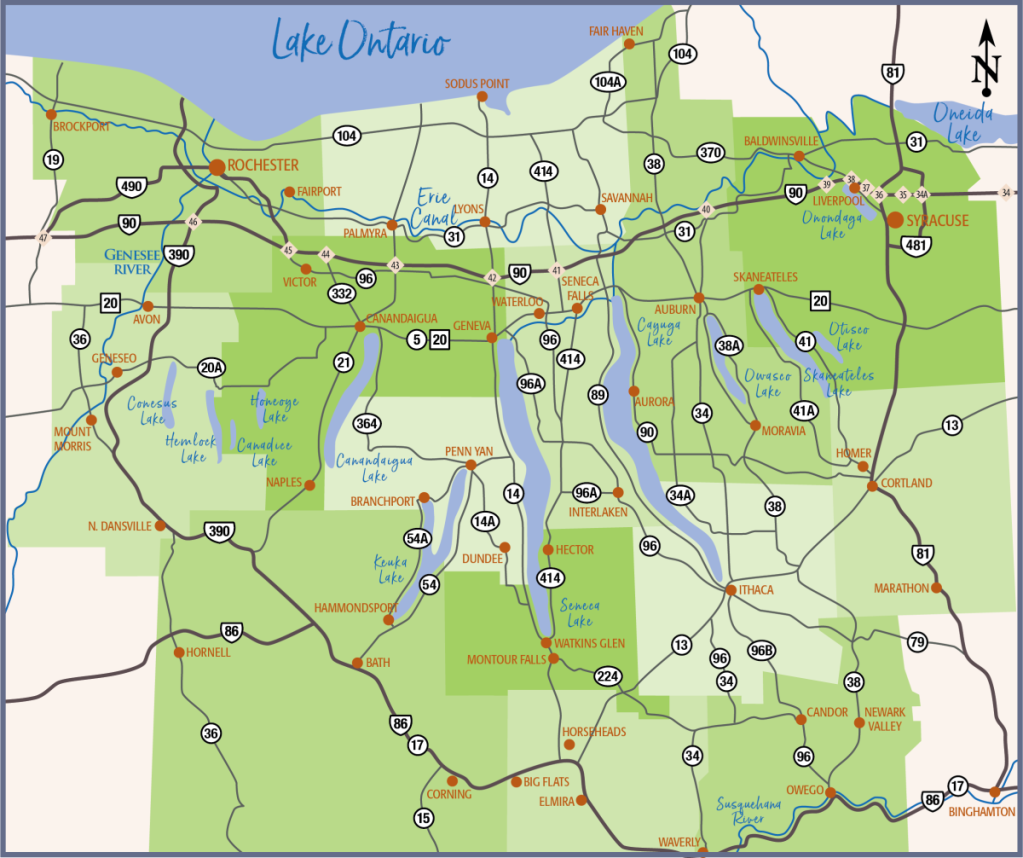A few weeks back, we were talking about different wine varieties, and decided we needed to incorporate more Riesling into our lives. Mere days later, as if she overheard our conversation from 3,000 miles away, Courtney from Ravines Wine Cellars, in the Finger Lakes Region of New York, emailed us offering samples of their wines, including their flagship Dry Riesling. How could we refuse?
The following wines were provided as media samples for review. All reviews, descriptions, and opinions are our own. We received no additional compensation.
Riesling is a very versatile grape. It can also be polarizing; you either like it or you don’t. In our observation, the polarization is directly related to the versatility – Riesling wines can be made in a variety of styles, from dry to sweet. A few years ago, the market was flooded with cheap, sweet Riesling from Germany, which has turned a lot of wine drinkers away from Riesling in general. That’s a shame, because Riesling is a stunning grape, food friendly and elegant. While we tend to prefer dry wines, we’ve enjoyed some excellent off-dry Rieslings, and have an appreciation for the occasional sweet sip.
The Finger Lakes Region, in Upstate New York, is known for its Riesling. With a short growing season and cold, snowy winters, Riesling finds itself right at home there. The name, Finger Lakes, comes from the 11 long, narrow lakes formed by glacial movement millions of years ago. Seneca Lake and Cayuga Lake are two of the deepest in the US, at 618 feet and 435 feet, respectively.

Ravines Wine Cellars is celebrating its 20th anniversary this year. In 2001, husband and wife team Morten and Lisa Hallgren founded Ravines Wine Cellars, with a mission to produce a bone dry Riesling. Born in Denmark, Morten learned winemaking at his family’s estate winery in Côtes de Provence, France. Morten went on to earn a degree in winemaking from Ecole Nationale Supérieure d’Agronomie in Montpellier. Meanwhile, Lisa studied the culinary arts and is now a professionally trained Chef. As an adult, Morten came to the United States, eventually settling in Upstate New York, where he and Lisa purchased land between two ravines in the Finger Lakes region. You can read more of Morten and Lisa’s story on the Ravines Wine Cellars website.
Our sample pack from Ravines Wine Cellars included three wines; a 2017 Chardonnay, the flagship 2017 Dry Riesling, and their Bordeaux-style red blend, Maximillen 2017. These, and all of their portfolio wines are available for purchase on their website.
2017 Chardonnay (SRP $19.95)
A unique Chardonnay, made in the appassimento method by partially drying the grapes before pressing. The appassimento method is of Italian origin, and is used in making the rich and concentrated Amarone wines.
Clear golden color. Aromas of ripe apricot, mild citrus, and pear. On the palate, there are flavors of grilled lemon, pear, peach, and citrus. Medium body with vibrant acidity. The finish lingers with fresh citrus and just a hint of toasty warmth at the end. Excellent paired with roast chicken.


Dry Riesling 2017 (SRP $17.95)
Clear, golden color. Aromas of pear, apple, and citrus, with floral notes. On the palate, there are flavors of Bartlett pear, yellow apple, lemon lime, and lychee, with hints of honeysuckle and lemon blossom. Light body with brisk acidity and a lingering finish. Paired well with chicken and broccoli stir fry.
Maximilien 2017 (SRP $24.95)
54% Merlot, 46% Cabernet Sauvignon.
This is a classic Bordeaux blend. A New World wine with a distinctly Old World vibe. Ruby-garnet color. The nose is earthy, cherry, raspberry, and ripe plum. On the palate, smoky with blackberry, black cherry, ripe raspberry, and red currant, with black pepper, tobacco, cigar box, and wisps of bell pepper. Medium-plus body, with grippy tannins and bold acidity. Long finish of black fruit and spice. Somebody please get me a ribeye!

We found each of the Ravines Wine Cellars wines to be distinct, expressive, and downright delicious. We are happy to have more Riesling in our lives, and will remember Ravines Wine Cellars when it’s time to re-stock that corner of the cellar.
- By Kent Reynolds & Robyn Raphael-Reynolds
- Photos by Robyn Raphael-Reynolds
















